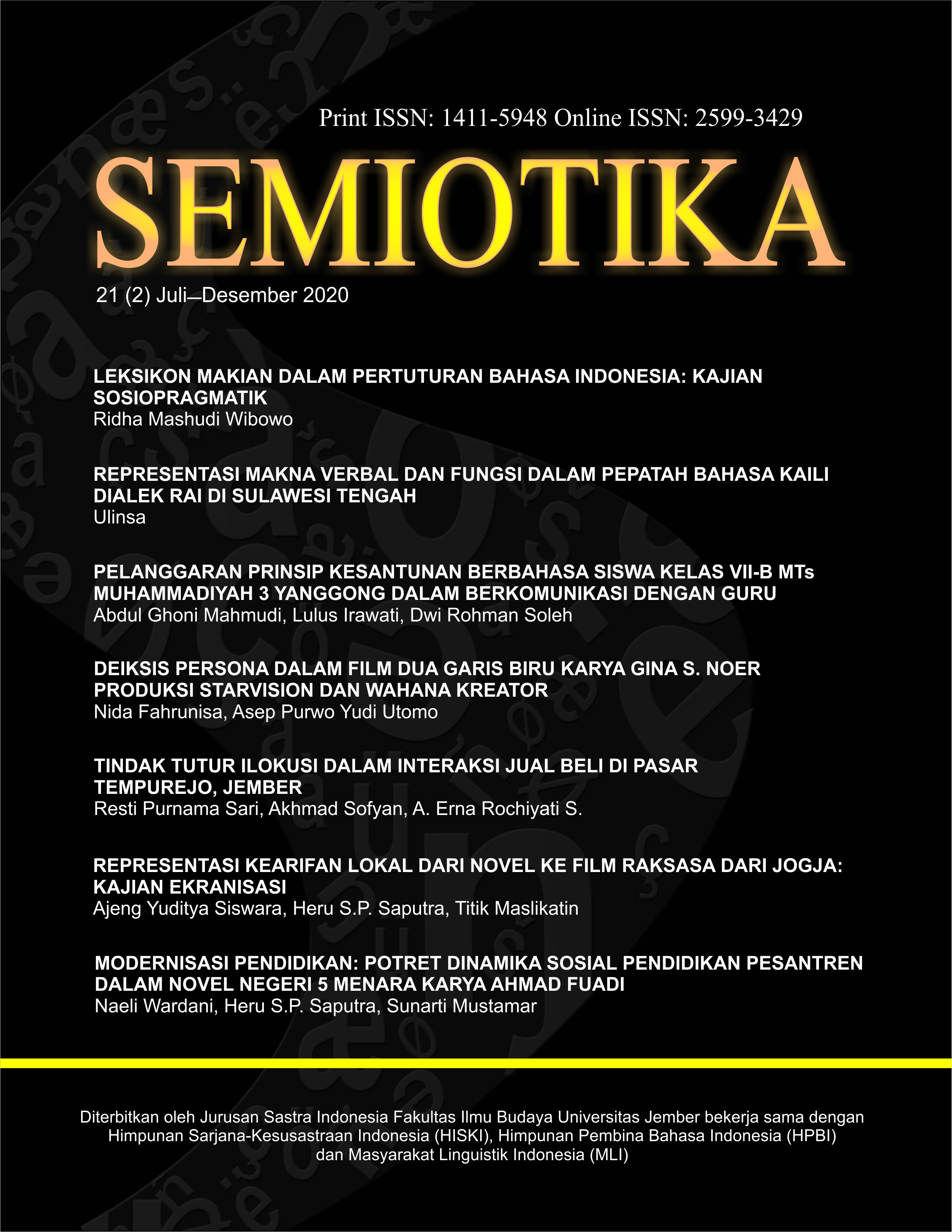REPRESENTASI KEARIFAN LOKAL DARI NOVEL KE FILM RAKSASA DARI JOGJA: KAJIAN EKRANISASI
DOI:
https://doi.org/10.19184/semiotika.v21i2.17464Keywords:
ecranization, Jogja, local wisdom, representationAbstract
This article analyzes the ecranization pattern between the novel Raksasa Dari Yogya and the adapted film. Filmize novel usually changes the story text's content because not all novel story text content can be moved on the screen. This study aims to get the changes that occur in the novel's adaptation pattern to the form of a film medium, and the shape of representations existed in the two works. This study uses an ecranization perspective. The methodology used in this study is qualitative because the data are in the form of narrative text in novels and visual texts which are the results of the film captured Raksasa Dari Yogya. The data collection method was collected by reading, taking notes, watching, recording film source data, and processing it. Data analysis is in the form of interpretation of data obtained from novel texts and films. The study results show that there are changes: reducing, adding, or varying modifications in terms of the content of the story text. It is caused by the difference between the media used between novels and films. Books and movies reveal Yogyakarta local wisdom representations in the form of arts and tourism. The local wisdom depicted in novels and movies reflects Yogyakarta culture's richness, strengthening a region's identity. The changes can make the film more attractive without changing the substance of the novel as a whole.
Downloads
Downloads
Published
Issue
Section
License
SEMIOTIKA has CC-BY-SA or an equivalent license as the optimal license for the publication, distribution, use, and reuse of scholarly work. Authors who publish with this journal retain copyright and grant the journal right of first publication with the work simultaneously licensed under a Creative Commons Attribution-ShareAlike 4.0 International License that allows others to share the work with an acknowledgment of the work's authorship and initial publication in this journal.
Attribution-ShareAlike
CC BY-SA


